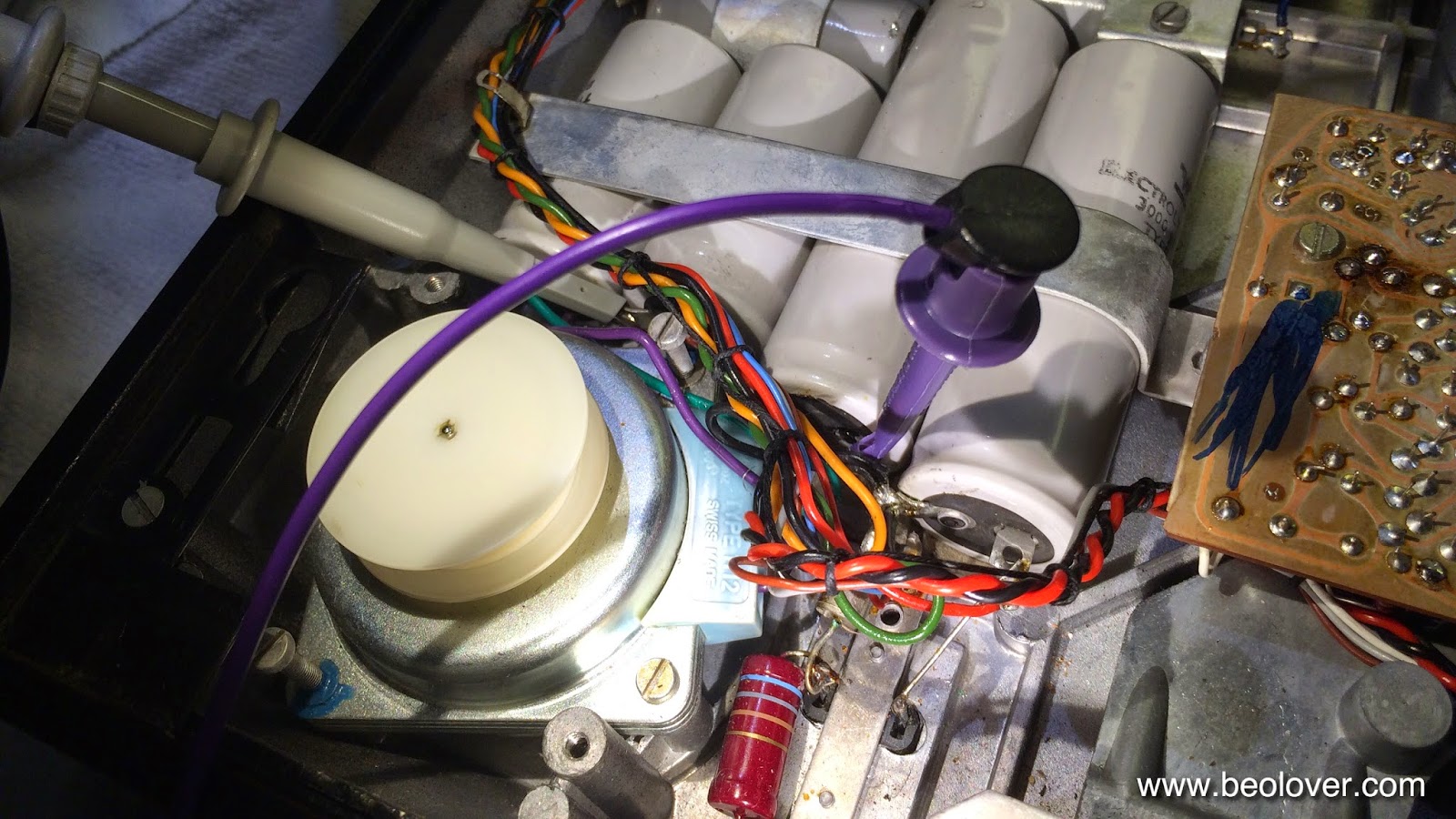When I initially tested the Beogram 4000 that I am currently restoring, I noticed that the motor was running a bit noisy, especially at 45 RPM. After I replaced all the electrolytic capacitors, this got better, but did not go fully away. So it was time to look into the motor voltage and the waveform that is presented to it by the Wien bridge oscillator (a nice classic design including the amplitude control light bulb that acts as a variable resistor that increases its resistance as the current increases - pretty nifty!). The AC waveform amplitude can be measured at one of the motor leads relative to GND.
This shows how I hooked up the oscilloscope probe between the 150uF unipolar phase shift capacitor for the 2nd phase of the motor and the 4000uF coupling capacitor to the motor drive amplifier (the purple clip makes the GND connection conveniently using the negative pads of the 3000uF reservoir caps):
The GND connection was made at the negative ends of the 3000uF reservoir caps. This is what I found at 33 RPM:
The RMS voltage was at 7.9V and the signal was clipped. A clear case of overdriving. 45 RPM looked like this:
Per service manual, the drive is to be adjusted to a RMS voltage of 6.5V at 33 RPM. I switched back to 33 RPM and turned the MOT potentiometer on the main circuit board until I saw a perfect waveform at 6.5V:
I also adjusted the "33" RPM trimmer (to the right of the MOT trimmer) until I got the specced frequency of 42.3 Hz.
An issue of this design is that 45 and 33 RPM have the same MOT trimmer setting but the oscillator puts out different amplitudes. Hence there is a small difference in the drive amplitude at 45 when the adjustment is made at 33:
There is also a small amount of distortion. This can easily be reduced if the drive voltage is reduced a bit to 5.5V:
But of course this results in a too low 33 RPM voltage of only 5.8V RMS at this setting:
I guess the designers elected to live with this small imperfection, since 45 is not so important historically. It also should be noted that the motor runs now very quietly at 45 despite the slight distortion and too low voltage. In light of the new 45 RPM audiophile vinyls, of course, one might consider getting a second 4000 adjusted perfectly for 45 RMP...;-).








This comment has been removed by the author.
ReplyDelete